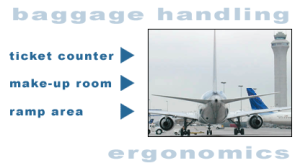
OSHA eTool for Airline Employees
Airline employees, including ticket agents and ramp agents, handle passenger baggage at several points throughout the baggage handling process. The body postures, repetitions, and forces required to lift, lower, push, pull, or carry passenger baggage can create potentially serious ergonomic hazards for the agents. The U.S. Occupational Safety and Health Administration (OSHA) warns, “many airline workers may be unaware of the potential hazards in their work environment, which makes them more vulnerable to injury.”
OSHA has developed an eTool as part of the OSHA-Airlines Industry and National Safety Council’s International Air Transport Section Alliance. This eTool describes many of the common hazards associated with the baggage handling process as well as providing possible solutions that are ranked according to their feasibility to the operations. Some hazards and solutions have been highlighted below:
Baggage Handling Hazards
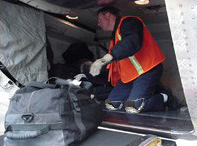
(OSHA)
- Handling heavy, large, or oddly shaped baggage requires use of excessive force and awkward postures, increasing the risk of musculoskeletal injury.
- Handling uneven loads, such as when grabbing two bags of different weights or carrying a single bag with one hand, can lead to uneven muscle exertions and poor postures, making muscles, ligaments, and discs more prone to injury.
- Repeatedly handling baggage can increase the risk of musculoskeletal injuries.
- Frequent lifting may not allow sufficient recovery time and increase the risk of muscle fatigue
- Lifting a bag by the handle can result in awkward postures and may cause injury if handles break. (Figure 1)
- Baggage straps getting snagged or caught on a beltloader may cause injury.
- Falling baggage can cause injury to unsuspecting workers as well as those who try to stop or catch the falling bags.
- Performing extended reaches while working in limited spaces can stress the neck and shoulders.
- Reaching to push the container onto the loader can strain the back, shoulders, and arms.
- Taking strollers, wheelchairs, or other oddly shaped and heavy items up or down loading bridge stairs can be dangerous, especially during wet or icy conditions
- Twisting the torso while transferring baggage to the main conveyor, often several feet behind the counter.
Possible Solutions
- Educate agents about proper lifting techniques to increase awareness of good work practices.
- Perform stretching exercises that help loosen and relax the muscles and joints.
- Use heavy luggage tags to create awareness of actual bag weights.
- Park carts within three to five feet from the beltloaders to minimize carrying distances.
- Use a hand truck or cart to move large and heavy bags over long distances.
- Secure or remove baggage straps.
- Ensure that ramp agents do not throw baggage or attempt to catch falling baggage.
- Forces due to acceleration may be two to three times greater than the object’s weight.
- Use kneepads to reduce contact trauma and abrasive injuries when kneeling on hard surfaces.
- Allow mechanical assist devices, such as a sliding carpet, to bring baggage close to you.
- Conduct preventive maintenance inspections on rollers so manual positioning of containers results in as little resistance as possible.
- Use chutes, slides, or mechanical lifting devices.
- Tag baggage while it is in the bagwell to avoid repeatedly lifting it to a temporary position on the floor and then lifting it again to the main conveyor.
- Tag excessively heavy baggage and get help from another person or use a lifting aid when handling baggage with heavy bag tags.
Worker Rights
Airline industry employees have a right to a safe workplace. The law requires employers to provide their employees with working conditions that are free of known dangers. The OSHA law also prohibits employers from retaliating against employees for exercising their rights under the law (including the right to raise a health and safety concern or report an injury). For more information see www.whistleblowers.gov or worker rights.
We Fight for Victims of Workplace Injuries…Contact us Now for a Free Consultation.
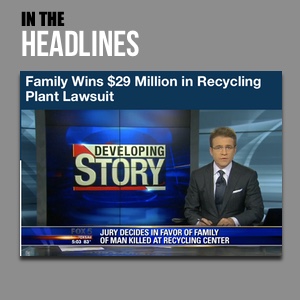 The Murray Law Firm has recovered millions of dollars for victims of unsafe workplaces, and recently obtained a $29.25 million dollar verdict for one of our Clients.
The Murray Law Firm has recovered millions of dollars for victims of unsafe workplaces, and recently obtained a $29.25 million dollar verdict for one of our Clients.
We represent our Clients on a contingency agreement, which generally means that no fees or payments are owed until and unless we recover. Anyone seeking further information or legal representation is encouraged to contact us via e-mail (click here) or by telephone at 888.842.1616. Consultations are free and confidential.
Choosing the Right Attorney
Selecting the right attorney for you or your family is highly important. You must feel confident that the attorney you hire has a complete understanding of the law applicable to your particular case, and has successful experience in handling such cases.
Important: Do not hire a lawyer who has violated the Rules of Professional Conduct!!!
You should not hire an attorney who calls you or visits you unsolicited, or anyone that contacts you directly to offer legal services. This activity is strictly prohibited by Rule 7.3 of the American Bar Association (ABA) Model Rules of Professional Conduct, which states as follows:
 A LAWYER “SHALL NOT” CONTACT A PROSPECTIVE CLIENT THROUGH A “LIVE TELEPHONE” OR AN “IN-PERSON” VISIT.
A LAWYER “SHALL NOT” CONTACT A PROSPECTIVE CLIENT THROUGH A “LIVE TELEPHONE” OR AN “IN-PERSON” VISIT.
– RULE 7.3, ABA MODEL RULES OF PROFESSIONAL CONDUCT.
If an attorney, or someone acting on behalf of an attorney, contacts you in this manner, that attorney is in violation of this Rule. This unethical and unprofessional activity on the part of the lawyer is good sign that you should stay away. It is imperative that you are represented by an attorney who is capable of advocating for you within the confines of the law, and an attorney who fails to abide by the Rules of Professional Conduct is probably not the best fit. In fact, any such attorney should be immediately reported to the local State Bar Association. If you have been contacted in such an unsolicited manner, contact us and we’ll assist you in filing a report.

Contingency Fees Disclaimer: “Contingent attorneys’ fees refers only to those fees charged by attorneys for their legal services. Such fees are not permitted in all types of cases. Court costs and other additional expenses of legal action usually must be paid by the client.”
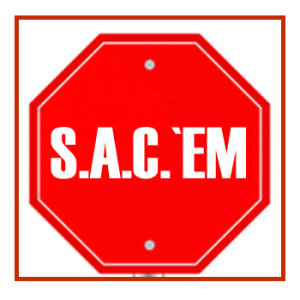
 The Legal Herald
The Legal Herald


 Gas station and convenience store robberies have increased over the last 10 years, according to FBI and NACS reports. As such, it is crucial convenience store owners take proper safety and security precautions to protect employees and patrons from violent crime.
Gas station and convenience store robberies have increased over the last 10 years, according to FBI and NACS reports. As such, it is crucial convenience store owners take proper safety and security precautions to protect employees and patrons from violent crime.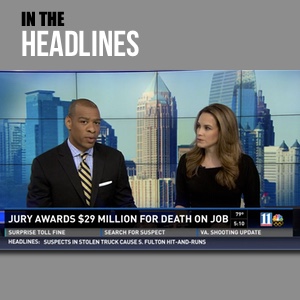 The Murray Law Firm has an extensive and successful record representing victims of workplace violence and retail security negligence. We have recovered millions of dollars for our Clients, and recently obtained a $29.25 million dollar verdict for a victim of an unsafe property. We offer our legal assistance, if desired.
The Murray Law Firm has an extensive and successful record representing victims of workplace violence and retail security negligence. We have recovered millions of dollars for our Clients, and recently obtained a $29.25 million dollar verdict for a victim of an unsafe property. We offer our legal assistance, if desired.



 The Murray Law Firm has recovered millions of dollars for victims of unsafe workplaces, and recently obtained a $29.25 million dollar verdict for one of our Clients.
The Murray Law Firm has recovered millions of dollars for victims of unsafe workplaces, and recently obtained a $29.25 million dollar verdict for one of our Clients.